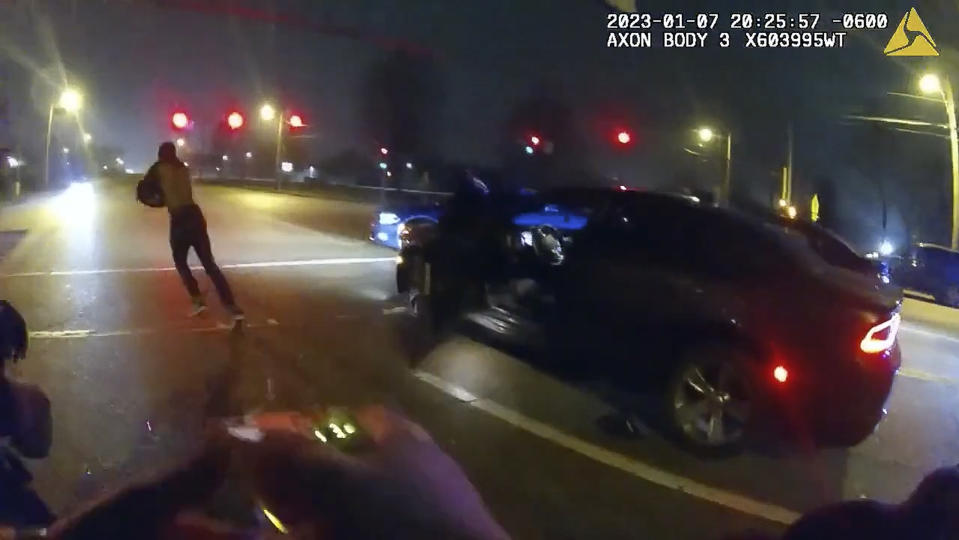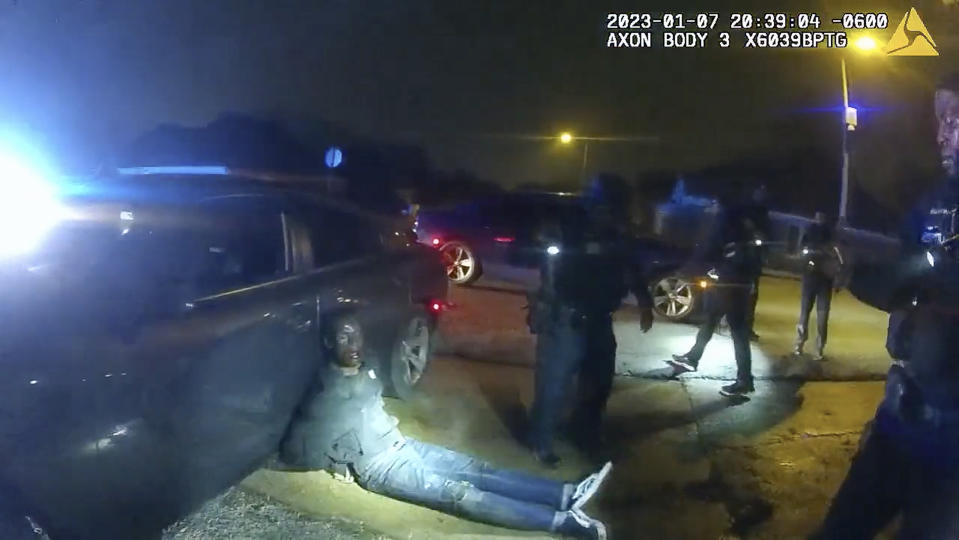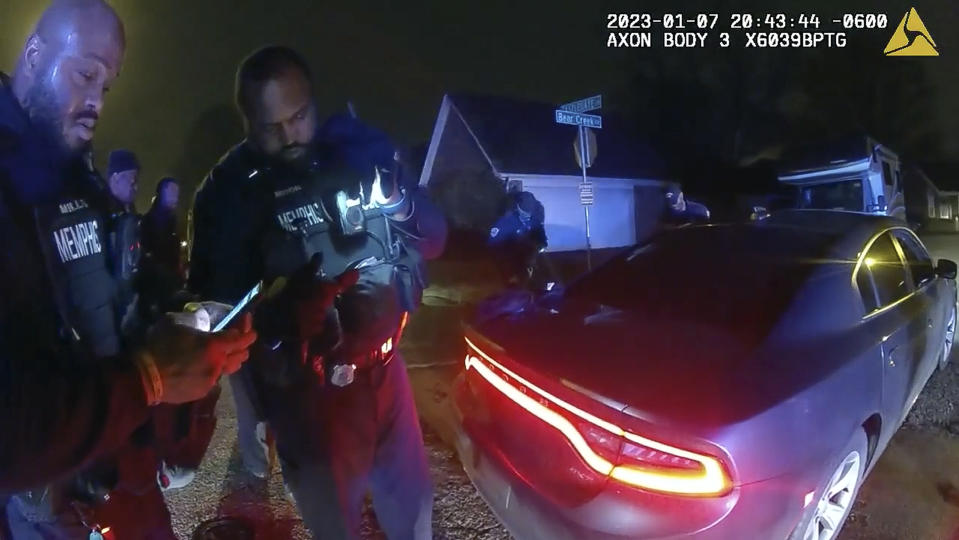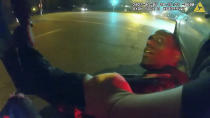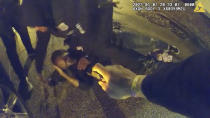In 67 minutes of video, brutality followed by nonchalance
If you stumbled on the scene too late, you might have missed him there, bloodied and beaten.
The officers’ demeanors seem untroubled and their work nonurgent as they mill at this quiet corner trading battle tales, a fist bump and a back pat. The police ranks have ballooned, but everyone seems to agree there’s nothing to see here. They tie their boots and fret over their glasses and carp about knee pain, so you might have missed him there among the phalanx that towers above, the ones who wear a smile and spurt laughter and will go home safe.
Look past the men who punched, kicked, shocked, sprayed, dragged and now stand in seeming indifference. Let your eyes drift downward and the crumpled body comes into view. Hands behind his back, one shoe off, he writhes helplessly on the pavement. His screams seem to have ended, his cries for his mother have stopped and his voice has weakened so much his words are hard to discern.
“You can’t go nowhere,” the officer bent over him responds. “You can’t go nowhere.”
In harrowing video of this Memphis night, all eyes are drawn to the chaotic moments of brutality that preceded this and would leave another Black man dead at the hands of police. But alongside the attacks themselves the footage captures another excruciating reality: Minute after minute of officers’ jocular nonchalance as Tyre Nichols lay critically hurt, their behavior seemingly affirming just how ordinary this sort of thing is.
“The cops who murdered Tyre Nichols are not some aberration. They’re not an outlier,” cultural critic Touré wrote on Twitter. “That’s normal police procedure it’s just usually they get away with it.”
The 67 minutes of body camera and surveillance footage released in the case are a muddled and messy picture of the night that would lead to Nichols’ death and murder charges for five officers, all also Black. The views are at times obscured and the story incomplete, but the video also offers stunning clarity of what happened.
It starts at about 8:24 p.m. on a Saturday evening, Jan. 7. What roused officers to pull Nichols over is unseen, but for the routine traffic stop they claimed it was, the escalation appears to be immediate and baffling.
At least three officers surround Nichols’ car as he is yanked from his blue sedan. At least one of them approaches with a gun extended. Nichols can be heard for the first time, saying “I didn’t do anything,” and is pushed to the ground. He voices compliance, repeating “all right” over and over as the officers scream and curse.
“Tase him! Tase him!” one officer barks.
He has been wrestled to the ground, but officers keep yelling for him to lay down, an order that seems to confuse Nichols, who is already lying on his right side. Still, he responds calmly, his voice cracking just a hint as he tries to appease them.
“You guys are really doing a lot right now,” Nichols says. “I’m just trying to go home.”
Nichols finally appears rattled as officers continue to shout for him to lie down.
“I am on the ground!” he yells back, before suddenly, he is up and has broken free.
From the time officers opened his car door, only a minute has passed.

 Yahoo Autos
Yahoo Autos 

